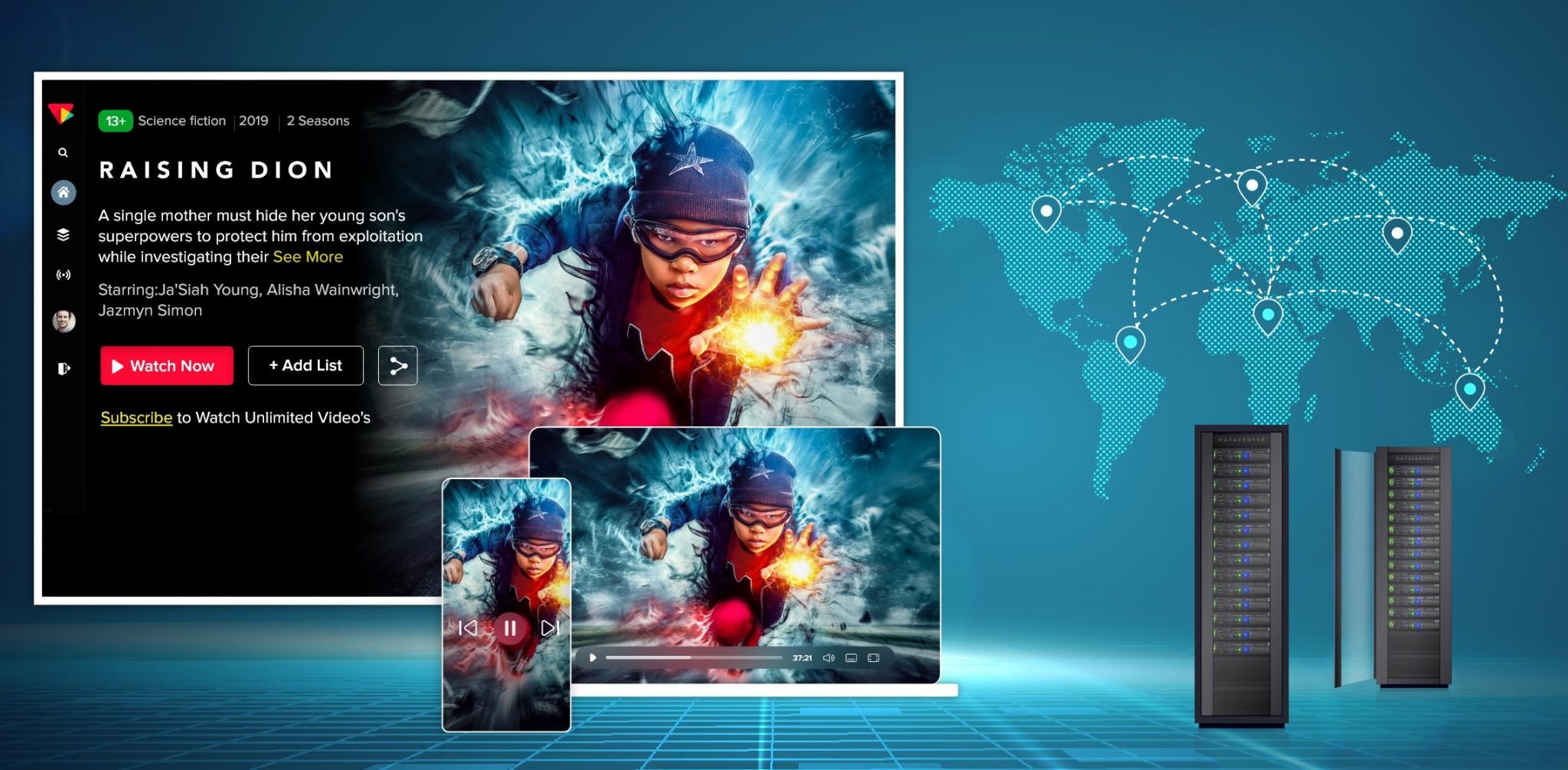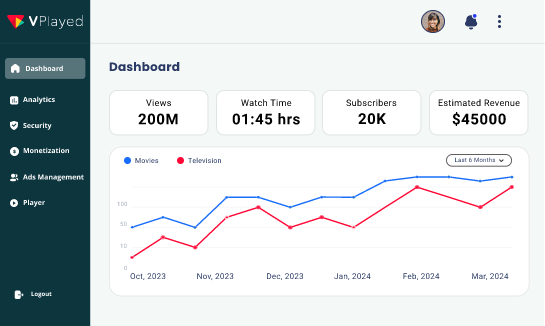An Extensive Weighing on What is CDN & How it Benefits Video Streaming

A content delivery network is a spine that keeps internet content up and running. The social media posts, youtube videos, e-commerce websites, live streaming, everything that we skim on a daily basis, makes us to come in contact with CDN.
CDN is deployed in different physical locations/countries known as Points of Presence – PoP that captures cached versions of content and deliver when requested, thus, delivering content faster within the CDN’s proximity.
When it comes to streaming, more specifically, live streaming and video streaming, the entire process relies on the functionality of CDN. Without video CDN, what might take around 300ms(milliseconds) to travel across the globe for a one-way latency (ie., for the data to be transmitted one way.) can be reduced to half the time consumed. A round trip latency would drink up even more time than a single trip. Though the time taken for transmitting the content might not seem like a great loss, it completely changes the way live streaming and on-demand videos would be approached.
Video CDN does not restrict itself to down timing transmission through segregating into local servers but also plays a great role in regulating traffic on the primary network and overall, enhancing the entire video content quality. With enhanced video quality, increases the loyal audience rate.
It is estimated that the American content delivery network market is bound to show an upsurge from $1.95 billion in 2013 to $7.83 billion by 2019.
Table of Contents
How Content Distribution Networks function
A Content delivery network has number of Points of Presence located in various locations across the world. These Points of Presence consists of smaller units of servers in thousands. These servers retrieve images, HTML, and any other file format from the designated CDN server that is located near the user, instead of transmitting it from the original server of the content generator. This proves to be highly beneficial for websites that host dynamic content in various file formats. This is also a reason why it is impossible to access high quality non-buffering video/audio without the help of CDNs.
With the basic functionality briefed, let’s get into what makes CDN work in the crux. Content delivery network comprises of 4 component or nodes.
Delivery nodes – As the name suggests, these nodes work to deliver data to the viewers. They store cached content in them and deploy to the closest requesting users.
Storage nodes– Storage nodes provide the data which are stored in delivery nodes as caches.
Origin nodes – These nodes are where the content originate. They are present in the content owner’s premises.
They are highly scalable, provided that they are required to be transmitted a long way.
Control Node – These nodes are the back-end ops. They manage to choose best online video hosting platforms, routing, monitoring the functionalities of the delivery network.
Content delivery network reduces bandwidth usage, thus cutting down the costs and increase the global presence of the content. Though the structure of nodes are primarily the above mentioned types, how they are put into function and utilized depends on the architecture of each CDN according to their requirements. Generally, a CDN with a high number of Points of Presence (PoPs) are considered to be highly efficient in building and executing well performing streaming service.
Benefits of using CDN:
Faster loading Time:
The first and foremost benefit of using a CDN is that your content would be available even to the farthest end users no matter how intense the user traffic gets. Within the span of clicking a page or video and getting immediate access or waiting for a 10 second for the content to load, you might lose a 60% of user traffic on mobile phones. CDN gives you the privilege of instant loading, in turn, the ability to retain the visitors of your site.
Lower infrastructure Cost:
Pre-cached data does not restrict itself to delivering content at a faster rate. They also tend to lessen the cost engrossed in storing and transmitting from original server. Being the bearers of more than half the data generated online, they also hold a vast amount data that can give insights for statistics and how a course of happening takes place. Hence, employing CDN cuts down the cost of maintenance and productivity of infrastructure.
Lower packet loss
Packet loss is the data that is lost while being transmitted through vast distances. They arise due to errors in data transmission or network congestion. CDN is wary of both these factors and minimizes packet loss. In addition, with CDN, the download quality also increases, given there is minimal packet loss.
Why CDN is a necessity for video streaming:
Latency:
The main focus of live streaming service is to witness the events happening in a remote location from yours, with an experience of seeing it real-time. This implies two factors to be fulfilled. A good quality video with zero lag. Live streaming tends to lose its efficiency of streaming a game, for example, when the winner of the game gets declared even before the streaming broadcasts the ending. Thus, when it comes to streaming, it is important to maintain low latency aka less time lag.
High Scalability:
At any given time, 1/3rd of the population across the world accessing the internet is said to be watching a video. With such high demand for streaming videos, there arises a requirement for data transmission. Video streaming services are often prone to high server overloads. A high performing CDN saves streaming services from this mishap.
Security:
Video security is a factor that is uncompromisable. The videos you store and stream should be safeguarded from the hands of hackers, piracy and virus attacks. Most CDN provides multiple security screenings and encrypt content to shield the content they manage. The major threat online content faces in terms of breach are DDoS (Distributed Denial of Service). These attacks take various forms of approach. A well-equipped CDN employs different methods of protections such as HTTP load balancing, physical scrubbing centers, detecting encrypted traffic etc., to ensure safety of videos from being pirated.
Reachability:
The above factors combine together to give your users an overall smooth user experience when they watch videos. With high definition and zero buffer time in live streaming, it is a given that your audience reach is bound to spread over borders. CDN comes to the rescue once again by providing locally rich quality for international content. If you are a video provider looking for a CDN to stream content to a pan-demographic audience, it is important to choose a CDN that has servers in multiple locations.
The influence of mobile phones in shaping how CDN functions
The next major hurdle faced by CDN was to be compatible with mobile phones. Mobile phones are extremely metamorphical with their constant updates. Running a CDN that keeps up with this ever evolving technology was highly difficult, especially when the statistics show that 89% of videos are viewed on these portable devices. Though at present, there are multiple options to choose from to build a video CDN, or outsource them, it important to take into consideration, some of the key factors that would have a direct impact on how your video performs.
The First and foremost on this list is the scalability of the CDN. Scalability determines the capability on what scale the library can perform.
To accomodate highly evolving tech, ie., the mobile phones, requires innovation.
Proximity to end users. This point can’t be emphasised any simpler. It is important to choose a CDN that has a high number of Points of Presence (PoP), directly influencing your video quality.
Cost of the CDN should be compatible with your budget while not compromising on the type of service you would require.
How do you go for the best CDN service that suits your needs?
There are multiple CDN available in the current market to commercially host your domain. But choosing the best CDN that fits your requirements would help you cut down redundant expenditures that you might spend by choosing the wrong one.
Tech Specifics
While choosing a CDN, make sure it is faster than your original server, has a big range of data delivering capacity and examine if the demographics of your audience and CDN servers correlate.
Efficiency
Performance of your website, directly depends on your selection of CDN. It is important to take the connect time, wait time, traceroutes and number of PoPs into account.
Cost
The Cost of the CDN you hire should fit within your budget. Though CDNs, in general, are known to reduce hosting costs, selecting a CDN to fend to relevant audience in major goes a long way.
Features – Services provided by the CDN should be taken into account before employing it. A complex DNS can slow down the transmission time of a 5mb data. These kinds of latency can be avoided by looking into the functionalities beforehand.
Conclusion:
By all means, Content Delivery Network is the mogul of data transmission, with the humankind churning out heaps of data every passing minute. From video streaming solutions to animated gaming websites, to make your content not get lost in the skyline of internet articles, it is crucial to invest in strategies that provide outstanding delivery ideas and come up with the best game-plans possible. Choosing a compatible content delivery network that suits your needs the best ticks most of these boxes, thus, making you cross half the way to your dream of viewer engagement.
Eager to know more on how streaming might impact your enterprise?
Talk to our experts




